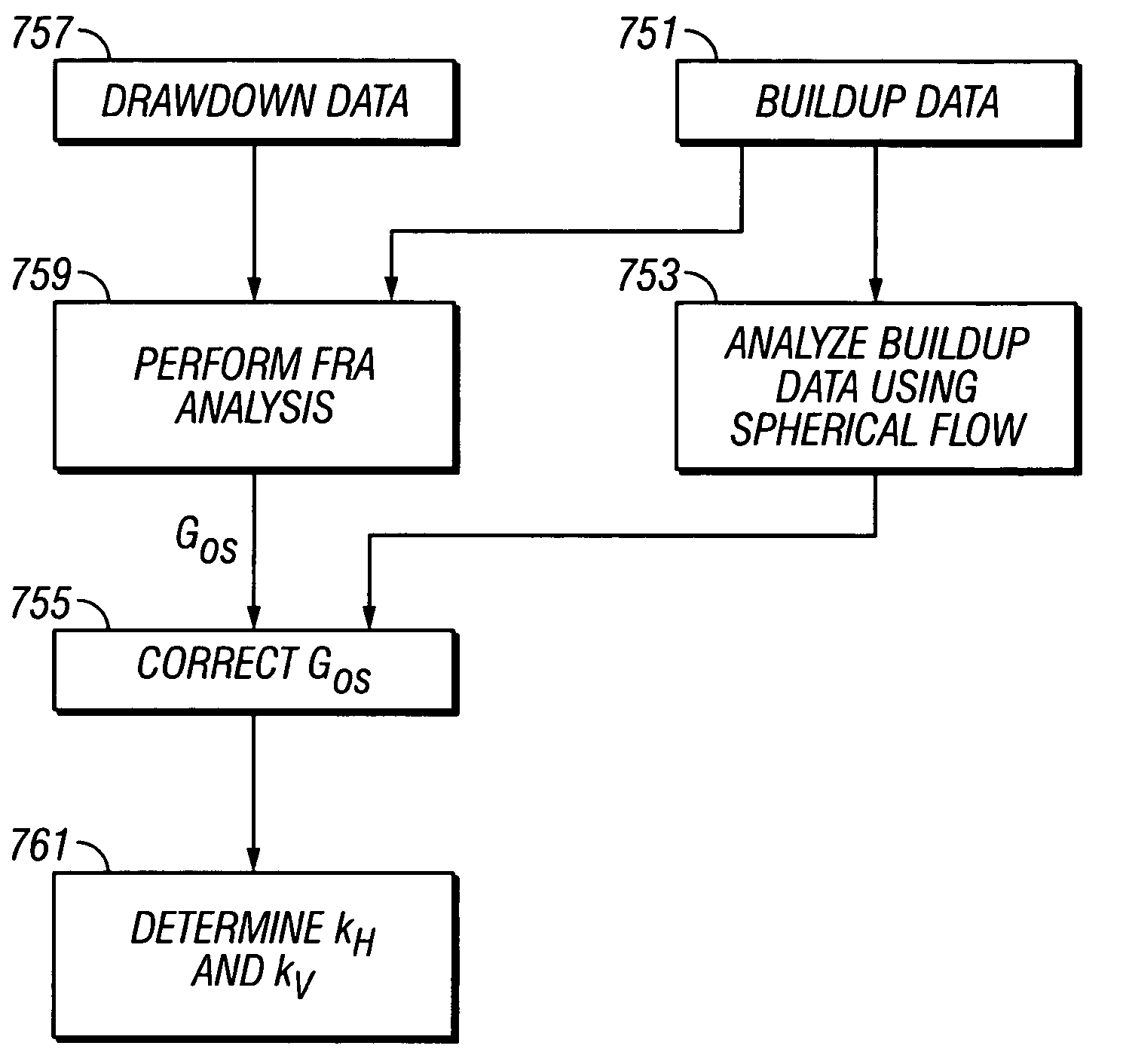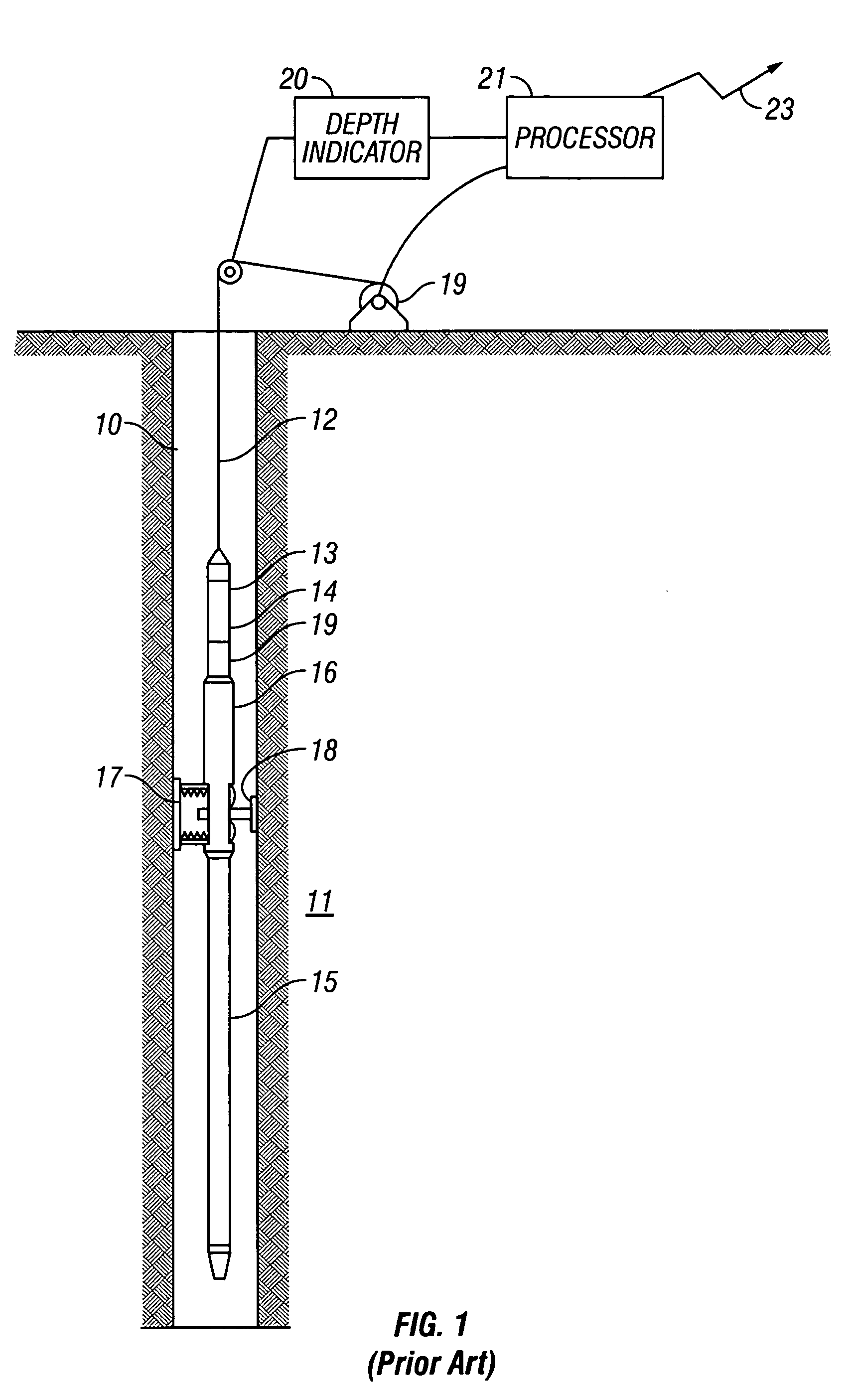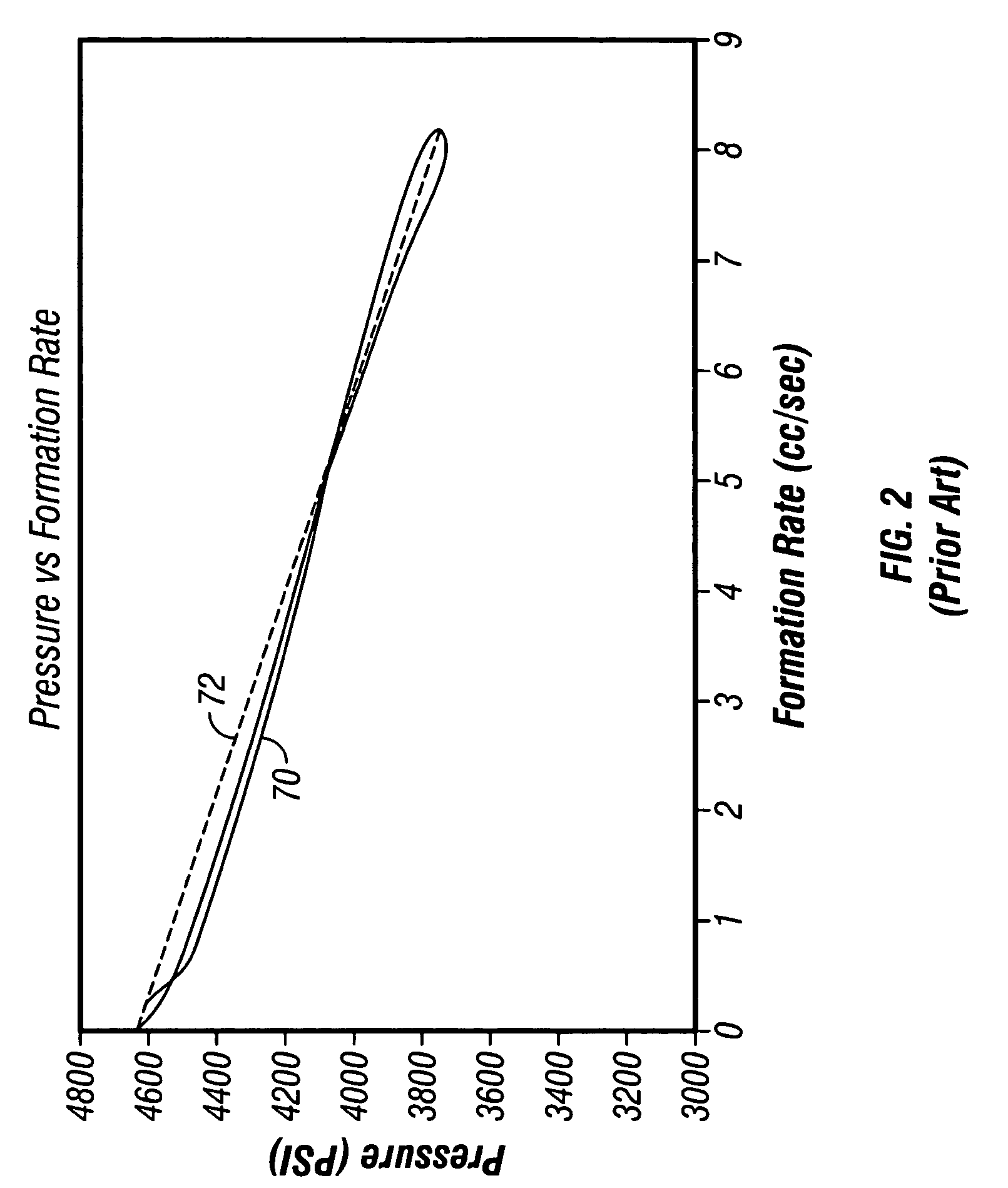Determination of correct horizontal and vertical permeabilities in a deviated well
a well and horizontal and vertical permeability technology, applied in the direction of seismology for waterlogging, borehole/well accessories, instruments, etc., can solve the problems of inability to achieve constant drawdown rate, inability to meet steady state flow condition, and difficulty in reaching constant drawdown ra
- Summary
- Abstract
- Description
- Claims
- Application Information
AI Technical Summary
Benefits of technology
Problems solved by technology
Method used
Image
Examples
first embodiment
[0079]FIG. 8 is a flow chart illustrating the invention. Pressure buildup data 751 are analyzed to get a first estimate of spherical permeability. Separately, the pressure buildup data 751 and the drawdown data 757 are analyzed to get a second estimate of spherical permeability 759. Using the two different permeabilities, the geometric factor Gos for the probe is corrected 755 and using the corrected Gos, the horizontal and vertical permeabilities are determined as discussed above.
second embodiment
[0080] the present invention uses the spherical permeability obtained from the pressure buildup test (the first permeability) as a starting point for matching the entire pressure history, including the drawdown data. In Interpret2003 the geometric skin factor, sp, is used to describe the non-spherical flow near the probe. Even though the local geometry near the probe does not affect the permeability estimate, it does affect the pressure data as given by eqn. 2. In the above example, using the BU estimated permeability of 9.62 mD and an isotropic geometric skin factor of 1.95 shown in Table 1, the pressure data from Interpret2003 cannot be matched with the simulated pressure data because we used the wrong isotropic geometric skin factor. This is shown in FIG. 9 where the abscissa is time and the ordinate is pressure. The buildup portion is used to derive the permeability and this derived permeability is used to model the pressure data. More obviously, the modeled drawdown data 803 do...
PUM
| Property | Measurement | Unit |
|---|---|---|
| deviation angle | aaaaa | aaaaa |
| permeability | aaaaa | aaaaa |
| transient pressure measurements | aaaaa | aaaaa |
Abstract
Description
Claims
Application Information
 Login to View More
Login to View More - R&D
- Intellectual Property
- Life Sciences
- Materials
- Tech Scout
- Unparalleled Data Quality
- Higher Quality Content
- 60% Fewer Hallucinations
Browse by: Latest US Patents, China's latest patents, Technical Efficacy Thesaurus, Application Domain, Technology Topic, Popular Technical Reports.
© 2025 PatSnap. All rights reserved.Legal|Privacy policy|Modern Slavery Act Transparency Statement|Sitemap|About US| Contact US: help@patsnap.com



